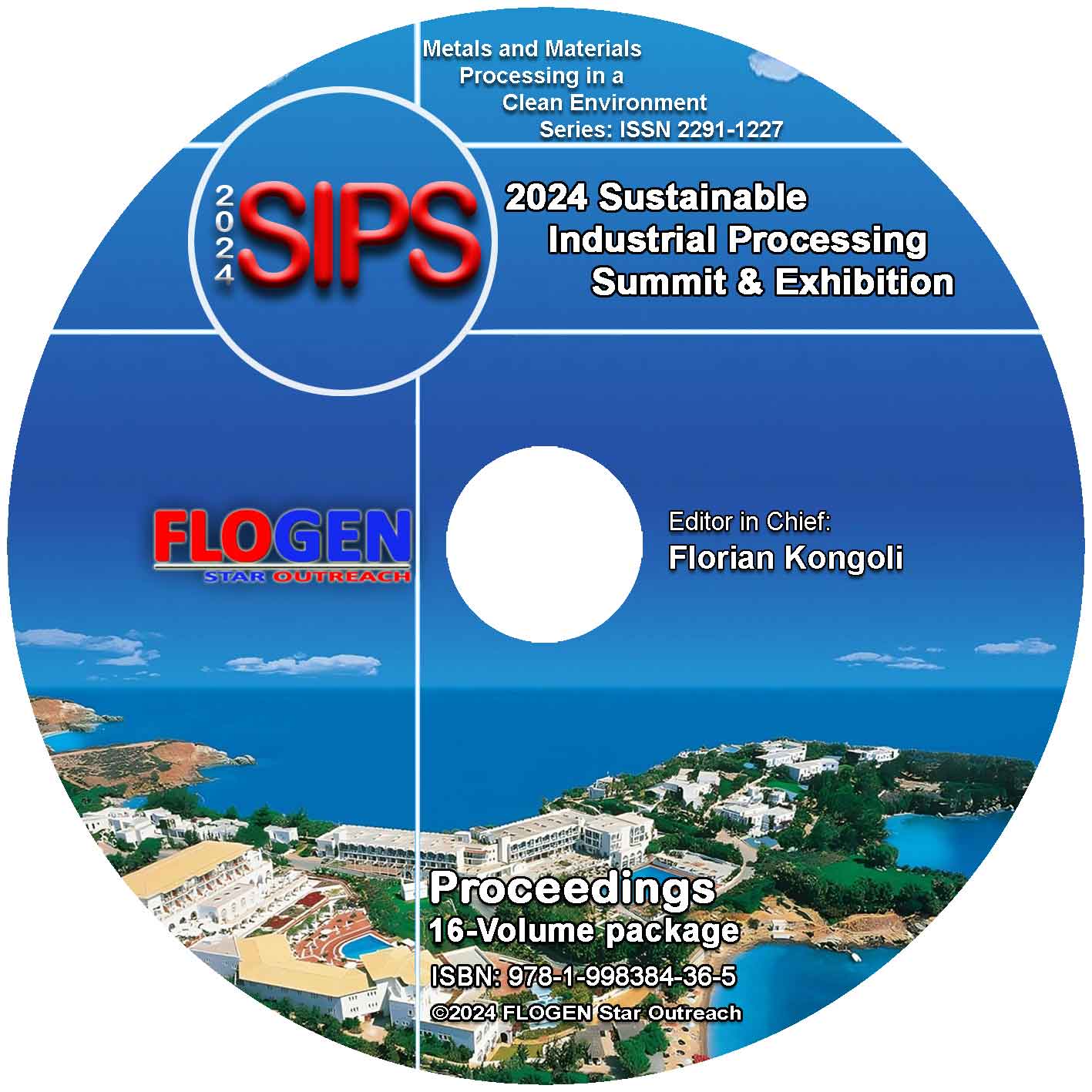2024 - Sustainable Industrial Processing Summit
SIPS 2024 Volume 1. Abe Intl. Symp. / Oxidative Stress and Technological Innovations in Medicine
| Editors: | F. Kongoli, H. Inufusa, T. Yoshikawa, C.A. Amatore, H-Y. Chen, W-H. Huang |
| Publisher: | Flogen Star OUTREACH |
| Publication Year: | 2024 |
| Pages: | 218 pages |
| ISBN: | 978-1-998384-04-4 (CD) |
| ISSN: | 2291-1227 (Metals and Materials Processing in a Clean Environment Series) |

CD shopping page
POTENTIAL INVOLVEMENT OF OXIDATIVE STRESS IN ALLERGIC RESPIRATORY DISEASES: A REVIEW AND POSSIBLE ASSOCIATIONS WITH AIRWAY HYPERSENSITIVITY
Yuki Sato1; Yoichiro Sugiyama1; Shigeru Hirano2; Fuhua Yang3; Haruhiko Inufusa3; Toshikazu Yoshikawa4;1SAGA UNIVERSITY, Saga, Japan; 2KYOTO PREFECTURAL UNIVERSITY OF MEDICINE, Kyoto, Japan; 3GIFU UNIVERSITY, Gifu, Japan; 4LOUIS PASTEUR CENTER, Kyoto, Japan;
Type of Paper: Invited
Id Paper: 317
Topic: 54
Abstract:
Airway reflexes such as coughing, sneezing, and the expiration reflex are essential in preventing foreign body from staying in the airway. These defensive reflexes should be appropriately activated against foreign bodies entering both the upper and lower airways. However, excessive responses to airway stimulation can lead to further airway distress and result in complications such as an overactive cough reflex and sneezing.
Allergic airway diseases, such as asthma and allergic rhinitis (AR), are typically chronic and are occasionally characterized by excessive and prolonged Th2 responses to inhaled allergens. They are assumed to be linked to oxidative stress. Asthma is associated with decreased antioxidant defenses, such as superoxide dismutase, catalase, and glutathione. Patients with AR have systemically elevated oxidative stress and systemically elevated serum total antioxidant status levels. Concomitant use of nasal steroids and antihistamines significantly decreases total oxidative stress in AR patients. Significant improvement in clinical outcome was observed in subjects who received antioxidants along with intranasal steroid fluticasone furoate. Other treatments that have been reported to improve symptoms of respiratory allergic diseases by enhancing antioxidant status include hydrogen-rich saline, crocin, curcumin, and silymarin.
Interleukin (IL)-4 and IL-13 are critical cytokines in the induction of the pathogenic Th2 responses. They induce periostin in the airway tract that is highly expressed in chronic inflammatory diseases―asthma, atopic dermatitis, eosinophilc chronic sinusitis/chronic rhinosinusitis with nasal polyp, and allergic conjunctivitis.
In this presentation, we will briefly review previous studies regarding airway disorders linked to oxidative stress. We will also introduce our recent project regarding airway hyperresponsiveness and the involvement of periostin in respiratory allergic diseases using periostin-knockout mice and respiratory allergic models. Further studies are necessary to evaluate the possibility of anti-oxidative treatment for the hypersensitivity caused by allergic airway inflammation.